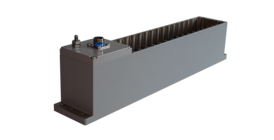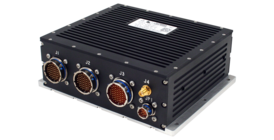- Overview
- Specifications
- Downloads
- Featured Products
- Request a Quote
- Product Support
The MIRG-220B module provides IRIG-B time code capability to the MEDAU/MCDAU/MWDAU-2000 miniature data acquisition unit. The module can be placed in either a master or remote unit and will provide time code capability for the modules within that particular stack. The module accepts an external IRIG-B, AC, or DC time source for frame time tagging purposes, and in addition, provides per-word or per-message time tagging capability for certain I/O modules in the stack that acquire bus data (e.g. 1553, ARINC-429, RS-232, etc.).
The MIRG-220B module also provides an IRIG-B DC time code output for cascading purposes. All encoded time words furnished by the MIRG-220B module comply with IRIG-106-96, Chapter 4 requirements for “high time”, “low time” and “micro time” formats. The module also has a built-in Real Time Clock (RTC) with a variety of battery backup options and an ADC to measure and encode the internal MEDAU-2000 system temperature and voltage rails within the host MEDAU-2000 Encoder.
Additional features
- Generates IRIG-B DC output
- Use for frame or bus word time tagging
- Generates status words for transmission in PCM
- Flywheel mode (runs on internal oscillator)
- Mission “elapsed time” mode (external reset)
- Compatible with MEDAU/MCDAU/MWDAU-2000 system
- Microsoft Windows application software included
Features
- Time code reader/generator module
- IRIG-B output time format
- Accepts IRIG-B AC or DC inputs
- Time compatible with IRIG 106-96
- On-board Real-Time Clock (RTC)
- Provides actual time when IRIG time source not available
- Automatically re-syncs to IRIG time every 10 sec
- Battery backup provisions for RTC
- Primary Li cell module on internal daughter board
- Primary Li cell in MBBU-2001 module
- VBATT voltage rail, supplied by an external battery
Applications
- Flight test instrumentation
- Wideband testing, structural analysis
- Physical research and experimentation





